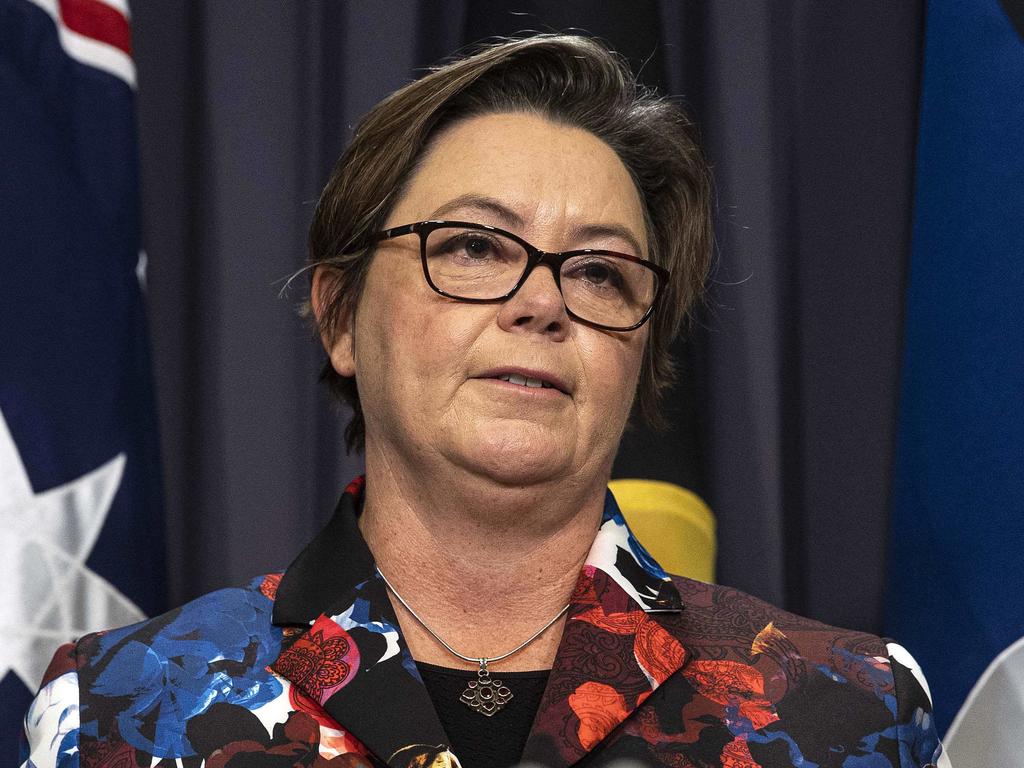Economy’s lost year as households squeezed between soaring cost of living, interest rate hikes
The nation faces 18 months of ‘economic unhappiness’, with turbocharged migration the only thing preventing a recession.

The nation faces a lost year-and-a-half of economic stagnation, with turbocharged migration the only thing preventing the economy from plunging into recession as millions of households are squeezed between soaring cost of living and interest rate hikes.
A further plunge in consumer spending and a looming rapid shake-out in already vulnerable industries such as housing construction, retail and hospitality could see the number of unemployed Australians rise 200,000 over the coming two years, new analysis has found.
Ahead of Tuesday’s Reserve Bank board rates decision, KPMG chief economist Brendan Rynne said that unlike the previous two jarring slowdowns triggered by the Covid-19 lockdowns in 2020 and the global financial crisis, this prolonged period of economic “unhappiness” will come courtesy of a “deliberate” policy choice by the independent central bank.
Dr Rynne said “as the cost of living climbs, those on lower incomes don’t have the capacity, unlike wealthier householders, to cut spending on luxuries to fund more expensive essentials, such as food, power bills and rent”.
“What happens is they get squeezed not with the nice-to-haves, but with the must-haves,” he said.
Judo Bank economic adviser Warren Hogan said it had become the consensus view that if the central bank hiked rates once or twice more, then the economy “effectively stalls”, with the weakest growth either in the back half or end of this year and into early 2024.
Counterintuitively, Mr Hogan said a greater risk was that the rate hikes already in the system do not slow the economy as intended over the coming six months, as this could force the RBA to punish mortgage holders even harder by restarting the rate hike cycle early next year.
“The problem is the economy is looking to be really resilient – that last employment number really shocked me,” he said, referring to a bumper 75,900 extra jobs created in May that pushed the unemployment rate down to 3.6 per cent.
“The big lift in net overseas migration was ostensibly aimed at filling labour shortages and a playing a bit of catch-up from Covid, but it might end up being the worst thing, because by bringing in such a rush of people who are all getting jobs, that will just make it harder and harder to slow demand.”
The dire economic outlook comes as new official forecasts revealed the tax bonanza from export earnings would fade over coming years after a record $459bn in commodity export earnings in 2022-23.
Monthly financial statements suggested the federal budget surplus in the past financial year would come in five times higher than the $4.2bn estimated in May, underpinned by elevated prices for key natural resources exports.
But the Department of Industry, Science and Resources estimated that the value of resources and energy exports was expected to plunge more than $100bn in the next two years as the coal and gas prices drop to pre-Ukraine war levels.
The KPMG modelling showed that after scraping out a 0.2 per cent expansion in real GDP in the first three months of this year, a crash in consumption would drive growth to virtually zero through the rest of 2023, before an outright contraction in the first quarter of 2024.
By that time annual growth will have dropped below zero, and will remain negative or flat until early 2025, the modelling shows. During this period unemployment will continue to rise, from 3.6 per cent to 4.2 per cent by the close of this year, before trending steadily up to 4.6 per cent in mid-2024 and reaching a peak of 5 per cent in early 2025.
Reaching that peak suggests an additional 200,000 unemployed Australians in a little under two years.
Another RBA rate rise on Tuesday will attract more vitriol from unions, the Greens and those Australians suffering with ballooning mortgage repayments. But Dr Rynne defended the RBA’s actions, and also its under-fire governor, Philip Lowe, who is likely to be replaced when his seven-year term ends in September.
“Governor Lowe is absolutely right when he says that high inflation is insidious, and that the most vulnerable suffer the worst impact,” he said.
Corinna Economic Advisory principal Saul Eslake said the Reserve Bank had made it clear that it would do whatever it took to bring inflation under control, and that a sharp slowdown looked inevitable as a result.
Mr Eslake said there might be one more interest rate hike, but that “two would be overdoing it”.
He agreed the expected 715,000 net increase in migration across two years could prevent a technical recession, as defined by two straight quarters of falling real GDP. Still, it was “highly likely that the unemployment rate would climb one percentage point over the coming year,” he said.
“That’s a more meaningful definition of a recession, so in that sense we will have one.”
Ahead of the formal release of KPMG’s latest Australian economic outlook this week, Dr Rynne said the rate hikes will have their intended effect, with the modelling showing inflation will drop to the top of the RBA’s 2-3 per cent target range by late 2024 – six months earlier than predicted by the central bank.
He said Australians should brace for this “prolonged period of economic unhappiness”, but that it would not be “disastrous”.
“It’s not like the ’91 and ’80s recessions. And the reason why that’s the case is consumption: while it’s weak, is being held up by population growth,” he said.
Even as the economy slows, ongoing solid pay rises would hold up increases in the price of services, leaving the country in a stagflationary environment of low growth and high inflation.
“People say there’s no wage-price spiral – that’s nonsense,” he said. “We are in a wage-price spiral, we are just in a weak one. It’s not 7 to 8 per cent … it’s 3, or 4, or 4.5 per cent wage growth that will hold inflation up.”






To join the conversation, please log in. Don't have an account? Register
Join the conversation, you are commenting as Logout